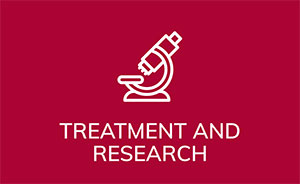Home » Treatment and Research » Indications for Treatment
Indications for Treatment
The indications for treatment form an important guideline as to when treatment is necessary for CLL / SLL and when it is not. When guidelines are not followed, some patients end up being treated too soon, and some patients, too late. This section will help you understand when CLL therapy is indicated and when it’s not.
Things to Know About Indications for Treatment
Many CLL / SLL patients never need treatment.
Many CLL / SLL patients never need treatment and have the same life expectancy of those without CLL. CLL / SLL should never be treated until there is a valid reason to treat, except in the case of a clinical trial.
Wait for a valid reason to treat.
Unlike some other blood cancers, there is no threshold level of the cancerous blood cells that demands treatment. Generally, CLL / SLL should not be treated until it starts to cause symptoms or is very likely to do so soon.
High white blood count alone should not drive treatment decisions.
Discuss this with your treating physician.
FEATURE
Most people who have been diagnosed with chronic lymphocytic leukemia (CLL) or small lymphocytic lymphoma (SLL) have no symptoms initially and are usually advised that no treatment is necessary upon diagnosis. Since the disease is a chronic, slow-growing cancer, many have no symptoms and experience little to no change in their health for many years. So, actively monitoring the disease without starting treatment has been proven to be a safe standard of care. Worsening symptoms of the disease develop slowly over time, so it is more important to look at trends versus any one lab result or symptom. It is critical to be aware of the signs and symptoms that may indicate there is a need to begin treatment. The decision of when to start treatment can be complex and varies from person to person.
ADDITIONAL READING



